
WINTER 2022 · VOLUME 7 1 · NUMBER 4
A Message from the President
Twenty years ago (midway through my career at AWI) I was appointed AWI president following the untimely death of our founding president (and my mentor), Christine Stevens. One year later, I met Susan Millward. At the time, AWI had two job vacancies: a marine mammal research assistant and an administrative position handling finances and bookkeeping. Susan came for an interview. She was bright, articulate, and impressive—and had the chutzpah to tell me she could handle both positions but only wanted payment for one! It was an offer I couldn’t refuse. And, yes, Susan deftly handled both positions.
I’ve worked alongside her ever since as she assumed increasing responsibility, eventually rising to the position of executive director. You can learn more about Susan in her bio on page 6. I’ll simply add that Susan’s dedication to the organization and deep connection to AWI’s mission are
Animal Welfare Institute
DIRECTORS
Caroline A. Griffin, Esq., Chair
Jill Carey
Mary Lee Jensvold, PhD
Alan E. Kessock, CPA
Cathy Liss
Chris Miller, DVM
William S. Stokes, DVM
OFFICERS
Cathy Liss, President
Caroline A. Griffin, Esq., Vice President
Alan E. Kessock, CPA, Treasurer
Mary Lee Jensvold, PhD, Secretary
SCIENTIFIC COMMITTEE
Juan Carlos Cárdenas, DVM
Cristina Eisenberg, PhD
Roger Fouts, PhD
David Fraser, PhD
Rich Reading, PhD
Viktor Reinhardt, DVM, PhD
Robert Schmidt, PhD
STAFF AND CONSULTANTS
Alexandra Alberg Senior Graphic Designer
Nancy Blaney Director, Government Affairs
Adrienne Craig, Esq. Policy Associate, Farm Animal Program
Kate Dylewsky
Senior Policy Advisor, Government Affairs
Sue Fisher Senior Policy Analyst
Marjorie Fishman
Public Relations Manager
Allie Granger Farm Animal Policy Associate
Joanna Grossman, PhD
Equine Program Manager and Senior Advisor
Johanna Hamburger, Esq. Director and Senior Staff Attorney, Terrestrial Wildlife Program
Georgia Hancock, Esq. Acting Director, Marine Animal Program
unrivaled, and I am grateful beyond words for the work she does and the spirit she brings to it.
When I decided to retire this year, I recommended Susan to the board of directors as an ideal candidate to lead the organization. Following careful deliberation, and upon receiving the enthusiastic support of the board, I am pleased to announce that Susan will take over as the organization’s chief executive, effective January 1.
Working at AWI has truly been my passion. My support of the organization, its staff, its board, its scientific committee, and—above all—its mission remains steadfast, and I look forward to continuing to help both as a member of the board of directors and as a consultant. My heartfelt thanks—to Susan for embracing her new role, to the board and staff, and to all of AWI’s supporters for all that you do to further our goal of preventing animal suffering and providing animals with a life worth living.
Robin Jacobsohn, Esq. General Counsel
Dena Jones Director, Farm Animal Program
Eric Kleiman Researcher
Joanna Makowska, PhD
Laboratory Animal Advisor
Wendy McNally
Donor Relations Specialist
Kim Meneo
Digital Engagement Manager
Susan Millward
Executive Director
Kate O’Connell
Marine Animal Consultant
Lauren Ponder
Bookkeeper
Mary Lou Randour, PhD
Senior Advisor, Animals and Family Violence
Gwendy Reyes-Illg, DVM Veterinary Consultant, Farm Animal Program
Naomi Rose, PhD
Marine Mammal Scientist
D.J. Schubert
Wildlife Biologist
Zack Strong, Esq.
Senior Staff Attorney, Farm Animal Program
Regina Terlau-Benford
Humane Education Manager
Dave Tilford Writer/Editor
For subscription inquiries or other information, contact:
Animal Welfare Institute 900 Pennsylvania Avenue, SE Washington, DC 20003 (202) 337-2332
awi@awionline.org
awionline.org

ISSN 1071-1384 (print)
ISSN 1930-5109 (online)
Tax ID# 13-5655952
CFC# 10474
23 AWI Awards Schweitzer Medal to Jennifer Lonsdale
23 MSC Suspends Lobster Fishery Certification over Right Whale Threat
24 IWC68: Budget Woes and Bad Faith Gestures Nearly Derail Whale Protection


According to the CDC, tens of thousands of long-tailed macaques were imported into the United States last year—most bound for pharmaceutical or biotech research labs. Inotiv, the nation’s largest commercial primate dealer, relies principally on a Hong Kong–based supplier that maintains captive-breeding facilities in Cambodia. In November, several representatives of this supplier were charged with multiple felonies in connection with an alleged smuggling ring involving wild-caught macaques “laundered” as captive-bred animals. According to the journal Science, Inotiv is one of two US companies that received monkeys referenced in the federal indictment. See page 20 for more on this story and AWI’s response. Photograph by Jamie Lamb.

11 AWI NEWS
A Message from the President
Changing of the Guard: Susan Millward Named New Head of AWI ANIMALS IN LABORATORIES
The Bleeding of Horseshoe Crabs Is Draining the Species 19 AWI Launches New Grant to Benefit Animals in Labs 20 AWI Urges US Government to Suspend Purchases from Monkey Suppliers After Smuggling Indictment 22 Exploring Macaques’ Preference for Physical vs. Touch Screen Cognitive Enrichment FARM ANIMALS
AWI Urges Swift Adoption of Animal Welfare Standards for USDA Organic Label 8 Dairy Industry Misses Chance to Improve Animal Care Standards 10 Hawaii Strengthens Protections for Animals in Transport 10 Birds Killed Cruelly Amid Avian Flu Resurgence
Animals on Farms Among Ian’s Victims HUMANE EDUCATION
Spread the Word! Scholarships Available for Students Seeking Career Helping Animals
2
6
19
7
10
28
MARINE LIFE
Champions in
Toes Amputated by Traps
Launches Bear ConflictReduction Pilot Program
Mitigating Human-Wildlife Conflicts on Vail Pass in Colorado GOVERNMENT AFFAIRS
Urge Rule Revisions for Right Whales
A Salute to Animal Champions Exiting Congress REVIEWS 26 In a Land of Awe 27 An Immense World 27 A Warbler’s Journey
WILDLIFE 11 Nations Strengthen Wildlife Trade Protections at CITES CoP19 16 AWI Honors Wildlife Law Enforcement
Panama 17 Study Reveals Grizzly Bear
17 Bozeman
18
4 Congress Passes the Big Cat Public Safety Act 4 PAST Act Passes House 4 Legislators
5
AWI QUARTERLY WINTER 2022
BASKING SHARK, PROCHYM
COVER
ABOUT THE
@AWIonline facebook.com/animalwelfareinstitute @AWIonline
CONGRESS PASSES THE BIG CAT PUBLIC SAFETY ACT
We are pleased to report that, after years of hard work and determination, AWI and allies have succeeded in securing House and Senate passage of the Big Cat Public Safety Act (BCPSA)! As we go to press, the measure awaits President Biden’s signature to become law. The BCPSA will end the cruel and dangerous pet trade in tigers, lions, and other big cats, as well as the exploitative cub petting/photo operations that fuel a relentless cycle of breeding, dumping (as cubs age out), neglect, and abuse.
PAST ACT PASSES HOUSE
On November 14, by a resounding 304-111 vote, the US House of Representatives passed the Prevent All Soring Tactics (PAST) Act. The legislation would end the barbaric practices associated with soring—the act of intentionally injuring a horse’s hooves and legs to force an exaggerated gait during certain walking horse
competitions. The Senate has not taken up the bill as of press time. If it fails to do so before the end of the term, the PAST Act must be reintroduced next year.
LEGISLATORS URGE RULE REVISIONS FOR RIGHT WHALES
Vessel collisions are one of the main threats facing critically endangered North Atlantic right whales, of which only an estimated 340 remain.
Senator Cory Booker (D-NJ) and Representative Raul Grijalva (D-AZ) led a letter from legislators to the National Marine Fisheries Service in support of the agency’s long-awaited proposed amendments to the North Atlantic Right Whale Vessel Strike Reduction rule. AWI also submitted comments urging NMFS to end the delay.
These changes (which industry groups have attempted to stave off via a strong misinformation campaign) would broaden management areas, extend seasonal speed restrictions, and expand mandatory speed restrictions to cover most vessels 35–65 feet in
length. Studies have found that slowing vessel speeds to 10 knots reduces a North Atlantic right whale’s risk of collision death 80–90 percent.
Since the original speed rule went into effect in 2008, NMFS has documented 12 right whale mortality and serious injury events involving vessel collisions in US waters, along with an additional five mortality and serious injury events involving unknown whale species, possibly right whales. These numbers are likely an underestimate of right whales injured or killed in vessel collisions. For a species on the brink of extinction, the loss of even one whale to vessel collisions is too much.
WE’LL NEED YOUR HELP IN THE NEW YEAR!
Passage of the BCPSA was a great way to close out the 117th Congress. On January 3, the 118th Congress convenes, with eight new senators and 77 new representatives. If you haven’t already done so, it is important for you to establish a relationship and raise animal welfare issues with your legislators. New animal welfare bills will arise, and unpassed bills from the previous Congress will be reintroduced. Sign up via our Action Center (awionline. org/action-center) to receive email alerts and look for notices in upcoming AWI Quarterlies regarding bills that need your legislators’ support. Grassroots communication to elected officials boosted the BCPSA and is vital to the success of future efforts to improve animal welfare!
Collisions with seagoing vessels have killed and injured a number of critically endangered North Atlantic right whales. Federal legislators are urging regulatory changes to make ocean traffic safer for the whales.

government affairs GOVERNMENT AFFAIRS
FWC FISH AND WILDLIFE RESEARCH INSTITUTE
4 AWI QUARTERLY WINTER 2022
A Salute to Animal Champions Exiting Congress
Every two years, Congress loses members who retire from politics, run for another office, or lose their reelection bid. Unfortunately, the end of the 117th Congress brings with it the loss of several long-time allies in the fight to protect animals. AWI extends its heartfelt thanks to the following representatives and senators for their efforts to improve the lives of animals by cosponsoring bills, advocating funds for important programs (such as the Endangered Species Act and grants to help domestic violence survivors and their companion animals), and holding agencies accountable when their action or inaction leads to animal suffering. (Representatives whose names are italicized are also members of the Congressional Animal Protection Caucus.)
• Rep. Alan Lowenthal (D-CA), tireless voice on behalf of animals on the House Natural Resources Committee and sponsor of many bills to protect birds
• Rep. John Katko (R-NY), lead cosponsor of the Child and Animal Abuse Detection and Reporting Act
• Rep. Fred Upton (R-MI), sponsor of the Preventing Future Pandemics Act
• Rep. Kathleen Rice (D-NY), sponsor of the Humane Retirement Act
• Rep. Charlie Crist (D-FL), champion of marine mammals, especially manatees
• Rep. Ted Deutch (D-FL), sponsor of the Preventing Animal Cruelty and Torture Act, which became law in 2019

• Sen. Patrick Toomey (R-PA), sponsor of the Preventing Animal Cruelty and Torture Act
• Sen. Patrick Leahy (D-VT), Rep. Jay McNerney (D-CA), Rep. Carolyn Maloney (D-NY), Rep. Sean Patrick Maloney (D-NY)
We especially want to recognize these members for their years of leadership:
Rep. Mike Doyle (D-PA) was first elected to Congress in 1994 and has cosponsored many important bills to improve animal welfare. Most significantly, though, for many of those years, he has been the prime sponsor of the Pet Safety and Protection Act (PSPA), a bill to put an end to the system of “Class B” dealers who sell dogs and cats acquired from random sources to laboratories. Thanks to his persistence in reintroducing that bill every Congress, and with an assist from a member of the appropriations committee, that network of dealers has been put out of business.
That assist came from Rep. Lucille Roybal-Allard (D-CA), a long-time strong supporter of animal welfare who is also retiring after 30 years in Congress. As a member of the Appropriations Committee, she added language to the spending bill for the US Department of Agriculture to prohibit the issuing or renewing of licenses for the Class B dealers covered by the PSPA. She has also supported efforts to promote the use of humane and effective non-animal research and testing methods in experiments funded by the National Institutes of Health.
Rep. Peter DeFazio (D-OR), elected in 1986, has for years taken on the USDA’s Wildlife Service program, notorious for its reliance on cruel and lethal methods to deal with human–wildlife conflicts. DeFazio has regularly introduced legislation to end the use of two deadly poisons that are among the program’s most inhumane tools: M-44 “cyanide bombs” and sodium fluoroacetate.
The progress that has been made in our treatment of animals would not have been possible without the support and leadership of these members of Congress. We hope their successors will follow in their footsteps.
GOVERNMENT AFFAIRS
5 AWI QUARTERLY WINTER 2022
TIANLEI WU
Changing of the Guard:
SUSAN MILLWARD NAMED NEW HEAD OF AWI

Executive director Susan Millward has been appointed the organization’s new chief executive upon the retirement of Cathy Liss at the end of 2022.
Animals have been a big part of Susan’s life since her childhood in England—first in rural Cheshire and then along the southwest coast—with rescued cats, hamsters, rabbits, goldfish, and a dog. After obtaining a BS in Environmental Health and an MBA from the University of Wales, Susan spent a year traveling in India, Thailand, and Nepal—exposing her to all manner of wild and domestic animals, in good and bad situations. On her return to the United Kingdom, she was hired by the US Navy to oversee environmental compliance with EU regulations at its UK bases. She met and married Rob, a US naval officer, which led to a move to the United States—but not to settle, exactly. Susan and Rob hopscotched to naval installations in California, Rhode Island, Virginia, Illinois, and Guam—where she learned to scuba dive and marvel at the ocean’s inhabitants in their own element. She
worked with the University of Illinois at Urbana-Champaign, researching and drafting its first Spill Prevention, Control and Countermeasure Plan, and later for environmental engineering firms on a variety of projects, while volunteering at animal shelters, a bird sanctuary, and beach and river clean ups.
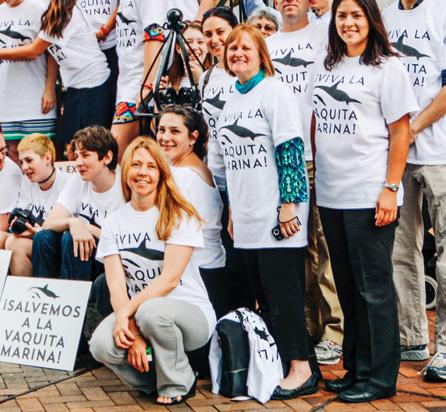

Eventually, Susan and Rob moved to the DC area. Susan applied for nonprofit animal advocacy positions, including two at AWI in 2003. (As Cathy mentions in her page 2 message, she got both of them.) Over the years, Susan has participated in nearly every aspect of what it takes to keep the organization humming and true to its mission. She’s developed and worked on campaigns at home and abroad and represented the organization in numerous meetings involving the negotiation and refinement of international wildlife protection agreements such as the Convention on International Trade in Endangered Species of Wild Fauna and Flora (CITES), the International Whaling Commission, and the Convention on Biological Diversity.
In 2008, Susan was named director of the marine animal program and executive director (back to working two jobs). She stepped back from executive director duties for a time due to a health issue, but resumed the role in 2022, while handing off directorship of the marine animal program. In addition to being AWI’s executive director, Susan serves on the boards of Monitor Caribbean, which works closely with AWI to preserve the biodiversity of the Wider Caribbean region, and the Species Survival Network, which works to strengthen wildlife protections established through CITES. In her downtime, Susan birdwatches, follows the activities of a local beaver family, fosters cats for a Northern Virginia shelter, and volunteers with her son Andrei’s scout troop.
Susan says she is looking forward to embarking on this next chapter in her and AWI’s intertwined story. AWI’s board and staff agree: The organization and the animals are lucky to have her.
6 AWI QUARTERLY WINTER 2022
AWI Urges Swift
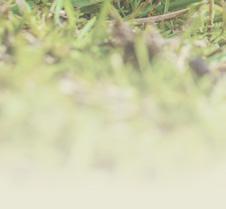
Adoption of Animal Welfare Standards for USDA Organic Label

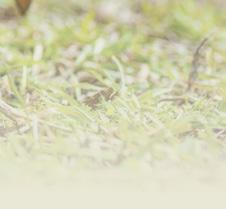
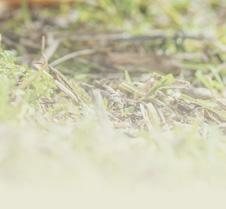


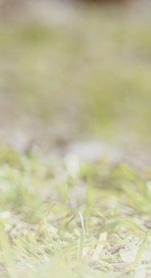



WHEN the US Department of Agriculture published proposed regulations that would establish welfare standards for animals raised under the National Organic Program (see AWI Quarterly, fall 2022), AWI quickly mobilized a coalition to garner support for the proposed rule and usher in longawaited improvements to animal welfare on organic farms.
The proposed Organic Livestock and Poultry Standards (OLPS) rule is nearly identical to the organic animal welfare regulations finalized in the last days of the Obama administration but withdrawn the following year by the Trump administration. If implemented, it will be the first comprehensive set of on-farm welfare standards at the federal level, affecting the treatment of millions of animals raised under the federal organic program.
Notably, the rule would clarify that enclosed, screened-in porches with a roof do not qualify as outdoor access, closing a major loophole that has led to the denial of outdoor access for egg-laying hens. It would also prohibit certain painful mutilations, such as the debeaking of birds, routine tail docking of pigs, and tail docking and face branding of cattle; prohibit gestation crates for pigs; and require environmental enrichment, including rooting materials for pigs, perches for egg-laying hens, and bedding for all mammals.
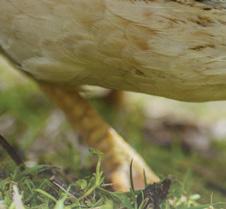


AWI and the ASPCA submitted comments co-signed by 17 additional animal protection and sustainable agriculture organizations, companies, and family farms. Our comments strongly urge the USDA to use its authority under the Organic
Foods Production Act to expeditiously finalize the OLPS rule and require compliance with all provisions in a timely manner for farmers to qualify for USDA Organic certification.
We advocate additional changes to the rule that would further strengthen animal welfare and more closely align USDA Organic production standards with those of thirdparty animal welfare certifications consumers typically rely on as proof of higher welfare conditions. We urge the USDA to require group housing of calves at an earlier age (the proposed regulations allow individual housing for up to six months); limit transport times for animals; require additional “fitness for transport” criteria in line with international guidelines; and improve outdoor space, soil, and vegetation requirements for birds and pigs to ensure animals have ample opportunities to engage in natural behaviors outdoors.
To indicate how important these regulations are to the integrity of the USDA Organic label, AWI and the ASPCA commissioned a survey to gauge consumer attitudes toward animal welfare under the National Organic Program. The results overwhelmingly demonstrate that consumers of organic products are concerned about the welfare of the animals, with 85 percent of respondents saying they think it is important for the federal government to establish clear, uniform standards for animal welfare on organic farms, and 84 percent saying these standards should meet or exceed those required under third-party animal welfare certification programs.
In addition, AWI coordinated letters from 57 representatives and 20 senators to the USDA in support of finalizing the OLPS rule. The department is considering a lengthy timeline for implementing the requirements for outdoor access for organic poultry. The lawmakers emphasized the importance of implementing this critical component as swiftly as possible.
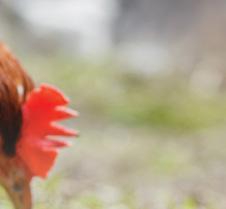
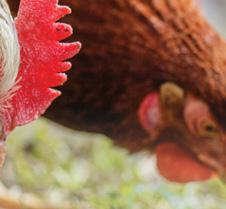

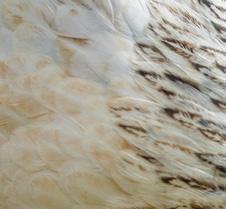

ALEXXNDR 7 AWI QUARTERLY WINTER 2022
Dairy Industry Misses Chance to Improve Animal Care Standards
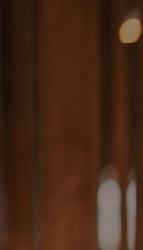










A ccording to the US Department of Agriculture, in 2021 the average number of US dairy cows involved in milk production at any given time was 9.45 million. The vast majority of them live within “CAFOs” (concentrated animal feeding operations, a.k.a. factory farms) in barren dry lots or “freestall” barns where they have little or no outside access or opportunity for exercise.
Today’s dairy cows have been selectively bred to produce up to 12 times the amount of milk they would naturally produce to feed their calves. Producing such enormous quantities of milk takes a physical toll, and dairy cows typically remain in production only three or four years before they are sent to slaughter.

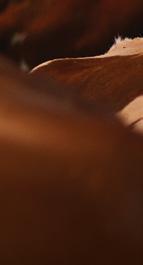
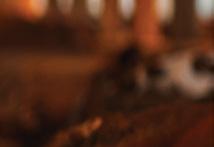
These cows unquestionably suffer poor welfare as a result of production practices. With no federal laws to govern the treatment of animals on farms, and most state laws (particularly in high-production states) designed to protect the industry not the animals, only industry standards remain to address the welfare of these cows.

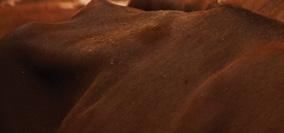
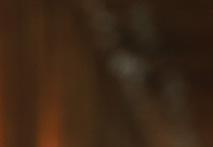
Since 2009, the Farmers Assuring Responsible Management (FARM) Program of the National Milk Producers Federation (NMPF) has audited and certified dairy producers and processors based on standards in five categories, including animal welfare. According to the NMPF, the certification covers 99 percent of dairy produced in the United States.
FARM performs on-farm audits every three years and issues “improvement plans,” whereby producers who have not met certain standards have varying amounts of time (from one month to three years) to comply before facing decertification. However, nearly half of FARM’s standards are not mandatory—if they are unmet, no corrective action is taken.
In late 2021, FARM initiated a revision of its animal care standards, which it does every three years. In August 2022, AWI provided recommendations to FARM for improving the standards based on current science, international welfare standards, and consumer expectations. Our recommendations addressed several areas, including but not limited to housing, transport, and pain relief. To support our recommendations, we commissioned public surveys to determine consumer attitudes toward common dairy industry practices.
Housing











Shortly after birth, calves are removed from their mothers. In the dairy industry, male calves are killed immediately or raised for veal or beef. Female calves are typically housed for the first several months of their lives in individual hutches or pens, often outdoors even in inclement weather, without contact with other calves. According to the USDA’s most recent survey of the US dairy industry in 2014, about 65 percent of pre-weaned calves were housed individually.
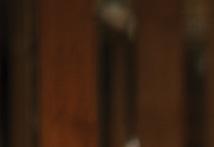
SEVENTYFOUR 8 AWI QUARTERLY WINTER 2022
FARM’s housing standards only require that calves be able to stand up, lie down, adopt normal resting postures, and have visual contact with other cattle. AWI recommended that calves be housed in pairs or groups as early as possible. Studies indicate that with proper management, calves can be housed together as early as 1–3 days old without issue. In a consumer perception survey commissioned by AWI, 68 percent of consumers indicated that housing calves individually for the first several months of their lives without contact with other calves was either “totally” (49%) or “somewhat” (19%) unacceptable.
With respect to adult cattle, FARM does recommend that all animals be allowed daily exercise—but failure to provide this does not result in corrective action. FARM neither mandates nor suggests that cows be allowed access to the outdoors. AWI recommended that FARM not only enforce a requirement for exercise, but also require outdoor access. Such measures would offer cows and calves the opportunity to socialize and engage in natural behaviors, both of which are essential to their overall welfare. Our survey indicated that constant confinement and lack of outdoor access are contrary to what consumers expect: 73 percent of consumers surveyed stated that a failure to allow outdoor access was either totally (56%) or somewhat (17%) unacceptable.
Pain Relief
As with most farm animals, dairy cows endure painful physical alterations such as disbudding, dehorning, castration, and branding, usually at a young age. These alterations are almost always performed without pain relief.


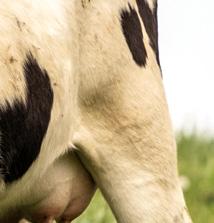
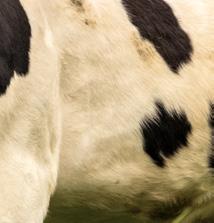
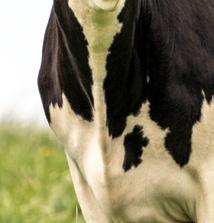

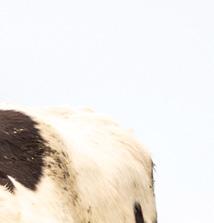
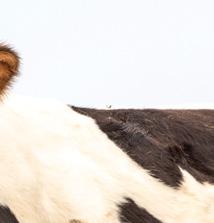


The pre-revision standards required pain mitigation for disbudding or dehorning. However, producers that failed to comply were allowed three years to implement pain relief procedures. The standards also suggested, but didn’t require, pain relief for castration and branding. AWI recommended that the revised standards mandate pain mitigation for all painful procedures, and that producers be


required to implement pain mitigation within nine months of a noncompliance determination. Of consumers surveyed, 81 percent agreed that pain relief was either very (53%) or somewhat (28%) important for disbudding or dehorning, and 82 percent felt it was either very (55%) or somewhat (27%) important for castration.


Full Enforceability

AWI recommended that FARM make all its animal welfare standards mandatory for producers to achieve certification—a necessary step if consumers are to have confidence that the dairy industry holds itself to higher standards of animal care, rather than merely aspiring to higher standards. Unsurprisingly, 83 percent of consumers surveyed either strongly (49%) or somewhat (34%) agreed that if an industry trade association provides certifications based on standards related to animal welfare, producers should be required to meet all such standards to be certified.
Conclusion




Certain industry practices are becoming less defensible from a scientific perspective, even as consumers of dairy products are becoming more concerned about the cows’ welfare. The industry, however, has been less than enthusiastic about adapting to the science or meeting consumer expectations. When FARM published the revised guidelines in September, the only changes incorporated from AWI’s recommendations were a decrease in the time to comply with the requirement of providing pain relief for disbudding and dehorning and making pain relief for castration and branding mandatory.
While FARM made some minor improvements to its animal care standards, it fell woefully short of what AWI knows consumers expect and what science supports. We encourage you to look for dairy products certified by third party programs recommended in the “best choices” section of AWI’s A Consumer’s Guide to Food Labels and Animal Welfare (awionline.org/ foodlabelguide) or buy nondairy alternatives to ensure that you do not contribute to the suffering of dairy cows.
LEE 9 AWI QUARTERLY WINTER 2022
HAWAII STRENGTHENS PROTECTIONS FOR ANIMALS IN TRANSPORT
After receiving oral and written testimony from AWI, the Hawaii Board of Agriculture voted to approve regulations to protect cattle, sheep, and goats transported via sea vessel between the state’s islands. In May, AWI—joined by nine other animal protection organizations, including five in Hawaii—submitted comments to the Hawaii Department of Agriculture (HDOA) advocating regulations to make sure animals slated for journeys are fit to travel, provided food and water for long journeys, given adequate ventilation within transport containers, and protected from heat stress during staging and travel times.
The HDOA incorporated many, but not all, of our recommendations. The rules now require that containers holding animals be placed in areas that allow the greatest access to ventilation to limit their exposure to heat and stress. The rules also restrict the number of animals per container and prohibit injured, ill, lame, blind, or latestage-pregnant animals from being
transported. Had they been enacted earlier, these rules could have prevented the suffocation of 21 cattle on a barge en route from Honolulu to Kaua�i in December 2019. The rules go into effect once signed by the governor.
BIRDS KILLED CRUELLY AMID AVIAN FLU RESURGENCE
After a decrease in avian flu outbreaks in July, the virus surged back in August and into the fall. As we reported in the previous issue, flocks exposed to the virus are “depopulated”—killed en masse and the carcasses disposed of. On very large commercial farms (>216,000 birds), the most common method is Ventilation Shutdown Plus Heat (VSD+), an extremely cruel method that kills birds by inducing heatstroke, a process that can take several hours.
We have urged United Egg Producers (UEP) to do more to avoid the use of VSD+. It violates UEP’s own guidelines, yet has been used extensively by commercial egg producers. AWI also invited our veterinary members to
support a resolution to the American Veterinary Medical Association asking that the AVMA reclassify VSD+ as “not recommended,” which would incentivize use of more humane methods.
ANIMALS ON FARMS AMONG IAN’S VICTIMS
Hurricane Ian caused massive destruction in Florida and killed over 120 people—making it the state’s deadliest storm in nearly a century. The storm also claimed the lives of unknown hundreds of farm animals. A preliminary assessment by the Florida Department of Agriculture and Consumer Services found at least 250 cattle had died in the storm, and media outlets reported the loss of over 500 cows on two Florida dairy farms alone. Each year hundreds of thousands of farm animals suffer terrible deaths in extreme weather events. Officials estimated that financial losses to Florida’s animal agriculture industry could reach $337 million to $492 million. The federal Livestock Indemnity Program (LIP) typically reimburses farmers for a portion of such losses—thus passing significant costs on to American taxpayers. AWI has worked to secure language in federal spending packages that directs the USDA to work with producers to develop plans to protect animals during disasters. Extreme weather events are on the rise. While not all disasters can be predicted or avoided, having and executing a viable disaster plan to help mitigate the harm should be a prerequisite for receipt of LIP payments.

FARM ANIMALS
farm animals
KERRY SHERIDAN/WUSF PUBLIC MEDIA
10 AWI QUARTERLY WINTER 2022
Hurricane Ian killed over 250 animals at this Manatee County, FL, dairy farm. AWI is urging more widespread adoption of disaster planning to minimize animal suffering and mortality during extreme weather events.
NATIONS STRENGTHEN WILDLIFE TRADE PROTECTIONS AT CITES C o P19




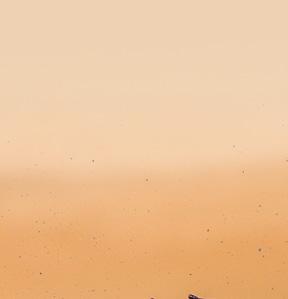


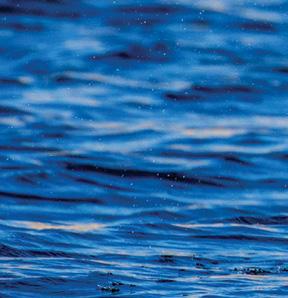


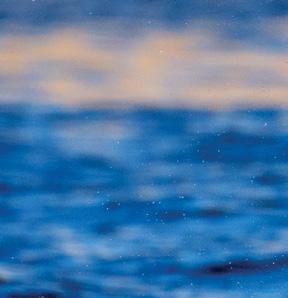
SIGNIFICANT PROGRESS for wildlife was achieved at the 19th meeting of the Conference of the Parties (CoP19) to the Convention on International Trade in Endangered Species of Wild Fauna and Flora (CITES), which met in Panama City, Panama, in November. Over two weeks, thousands of delegates from 152 parties approved decisions related to nearly 100 documents regarding the implementation and enforcement of the convention and added over 500 species



of animals and plants to CITES Appendix I (which largely prohibits international commercial trade) and Appendix II (which regulates trade to prevent species imperilment). Four AWI representatives—D.J. Schubert, Johanna Hamburger, Sue Fisher, and Yvonne Gurira—attended CoP19, working with other NGOs, including over 100 colleagues from the Species Survival Network, an AWI-cofounded global coalition of animal protection and conservation organizations.

CITES C o P19
MOBULA RAY, GUDKOV ANDREY 11 AWI QUARTERLY WINTER 2022
SPECIES LISTING PROPOSALS
Prolonged debates about elephants and rhinos are a regular feature of CITES meetings, demonstrating the stark differences between the utilitarian views of most southern African countries and the protectionist perspectives of other African elephant range states in eastern, central, and western Africa. CoP19 was no different, with multiple species listing proposals and working documents focusing on elephants and rhinos. The outcome of the deliberations was mixed.
A proposal led by Burkina Faso to restore all African elephants to Appendix I (the populations of Botswana, Namibia, South Africa, and Zimbabwe are currently listed on Appendix II) failed, but Zimbabwe’s attempt to reduce protections for its elephants was also rejected. For rhinos, Eswatini’s request to liberalize trade in its Appendix II-listed rhinos was defeated, but the parties agreed to downlist Namibia’s rhinos from Appendix I to Appendix II to permit exports of rhino trophies as well as live animals for “in situ” conservation programs (those within the species’ native range).
Unfortunately, an effort led by 10 African countries to ban international commercial trade in the common hippopotamus was defeated due, in part, to the European Union’s opposition—despite evidence of declining populations in many range states and significant trade in hippo parts. Had the 27 members of the European Union merely abstained, the proposal would have been within a single vote of passage.

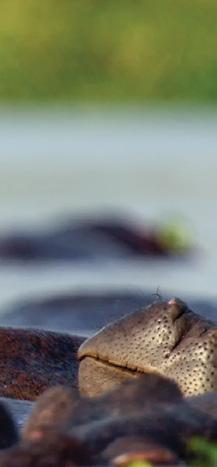


CoP19 was branded the “reptile CoP” by many, given that 23 of 52 species-listing proposals under consideration involved reptiles. The majority of these sought increased protection for snakes, turtles, geckos, and lizards due to extensive and
ongoing international trade in these animals for meat and/ or pets that, in some cases, is causing precipitous declines in wild populations.
There was grave concern prior to the meeting that several of the reptile proposals, particularly those for turtles, would prove controversial and face defeat if the European Union opposed the listing. By meeting’s end, however, EU efforts to defeat several such proposals had failed and virtually all were adopted—many by consensus.
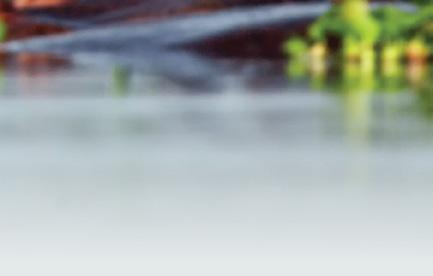
India, Mauritania, and Senegal secured Appendix II protections for the Jeypore ground gecko and the helmeted gecko, respectively. Mexico obtained an Appendix II listing for all horned lizards (including the desert horned lizard, which the United States also sought to protect). An EU/Vietnam proposal to list the Chinese water dragon on Appendix II was approved, while Australia obtained an Appendix I listing for its pygmy bluetongue lizard—a coveted species in the international pet trade.
All 12 turtle listing proposals were approved, many by consensus. The Leith’s softshell turtle (proposed by India), red-crowned roof turtle (India), and Indochinese box turtle (European Union and Vietnam) were all uplisted from Appendix II to Appendix I due to unsustainable removals from the wild for pets, meat, and/or traditional medicines, resulting in population declines of more than 90 percent for the softshell and box turtles. Two species of matamata turtle were added to Appendix II at the request of Brazil, Colombia, Costa Rica, and Peru, while the United States secured an Appendix II listing for common and alligator snapping turtles (traded
CITES C o P19
COMMON HIPPOPOTAMUS, KAREL
12 AWI QUARTERLY WINTER 2022
BARTIK
for their meat) and five species of broad-headed map turtles (traded as pets). Mexico and El Salvador secured the same protections for narrow-bridged, giant, and Mexican musk turtles and—with Brazil, Colombia, Costa Rica, Panama, and the United States—obtained an Appendix I listing for two mud turtle species and Appendix II listings for all remaining mud turtle species not already listed on Appendix I. Several of these same countries obtained an Appendix II listing for neotropical wood turtles, while the United States obtained an Appendix II listing for all softshell turtles not already on Appendix I.
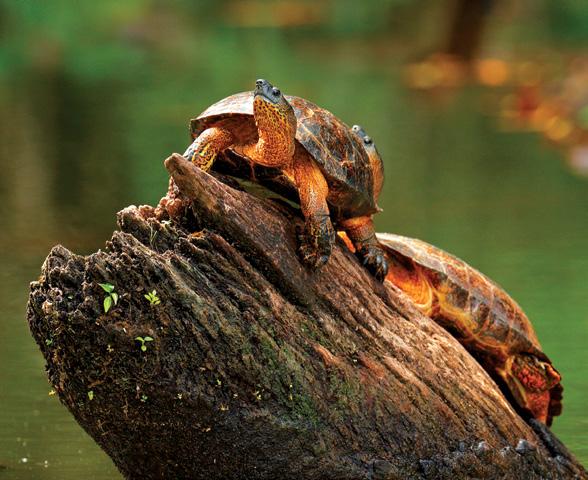
The most controversial amphibian proposal was one to list 153 species of glass frogs on Appendix II due to substantial demand from the pet trade. This proposal had failed at the last CoP. Despite the European Union’s initial opposition, it did not block consensus, and this time the proposal passed. The Lao warty newt, as proposed by the European Union, was listed on Appendix II (with no commercial exports of wildcaught specimens allowed). The European Union, Colombia, Costa Rica, and Panama obtained the same protections for the Lemur leaf frog.

Efforts to list commercially valuable marine species on CITES appendices are always controversial. While initially rejected, many marine species proposals have since been approved, providing protections to several shark and ray species (e.g., great white, basking, whale, mako, and some hammerhead sharks; manta and mobula rays) and other marine fish and invertebrates (e.g., humphead wrasse, nautilus). Often, such protections were not approved until the species experienced substantial population declines, with some shark populations declining 80 to nearly 99 percent before listing.
At CoP19, the parties clearly understood the urgent need to protect marine species from overexploitation. Over 50 species of requiem sharks—including blue, tiger, and bull sharks— were included on Appendix II at the request of 15 countries, with 75 percent of parties voting in favor. Brazil, Panama, the European Union, and others achieved Appendix II protections by consensus for several species of hammerhead sharks that were not previously listed, including the bonnethead, which has lost up to 79 percent of its population over the past 36 years. Brazil secured the same protections for several species of freshwater stingrays that are exploited for the international aquarium/pet trade, while Israel joined Kenya, Panama, and Senegal in obtaining an Appendix II listing for 37 guitarfish species, with nearly 88 percent of CITES parties supporting the proposal. The European Union, Seychelles, and the United States secured an Appendix II listing for the Thelenota genus of sea cucumbers, extensively traded for food and purported medicinal benefits and as a symbol of status and wealth. Unfortunately, Brazil’s request for an Appendix I listing for the zebra pleco—a marine fish in demand in the pet trade—failed.
WORKING DOCUMENTS
In addition to species proposals, CITES parties evaluated over 90 working documents pertaining to the interpretation and implementation of the convention. Some highlights on issues of particular interest to AWI include the following:
There was considerable debate over the representation of Indigenous peoples and local communities (IPLCs) whose livelihoods are connected to wildlife trade. The debate centered on whether special mechanisms should
CITES C o P19
LEMUR LEAF FROG, THORSTEN SPOERLEIN
13 AWI QUARTERLY WINTER 2022
BLACK RIVER TURTLES, ONDREJPROSICKY
be created to afford these communities an enhanced role in the CITES decision-making process. Most parties and observers, including AWI, support giving voice to all relevant stakeholders—both as accredited observer organizations and through dialogue with their own governments. But decisions within a global convention can only be made by nation-states that are parties to the agreement.
In the end, the parties opposed creating a permanent committee or subcommittee for representatives of rural communities, but created two working groups to continue deliberations on integrating livelihoods and engaging IPLCs into CITES decision-making. They strongly rejected proposals intended to stymie efforts to list species—one to require a predetermination that international trade is the key driver of a species’ decline; another to add food security, livelihoods, and socioeconomics to the listing criteria (rather than considerations to take into account after listing); and another to amend voting rules to give more weight to votes cast by species’ range states (for example, giving Zimbabwe a bigger share of the vote than the United States on proposals to open trade in elephant products).
The parties agreed to revise and strengthen previous decisions on totoaba, providing direction, primarily to Mexico, to increase its efforts to combat both illegal fishing in the Upper Gulf of California and trafficking in totoaba swim bladders to save the vaquita—the most critically endangered cetacean on the planet, with 10 or so individuals remaining. At the 75th meeting of the CITES Standing Committee, the day before CoP19 began, the committee directed Mexico to prepare a compliance action plan for totoaba by February 28, 2023. Should Mexico miss the deadline or the plan prove deficient, the secretariat will recommend that all parties suspend trade with Mexico until an adequate plan is provided.
Thanks to the United Kingdom, progress was made at CoP19 to increase protections for pangolins, the world’s most trafficked mammal. This should strengthen enforcement efforts, improve the control and management of pangolin stockpiles, lead to the closure of domestic pangolin markets that contribute to illegal trade, and give the Standing Committee an opportunity to provide specific recommendations to pangolin range, transit, and consumer states.
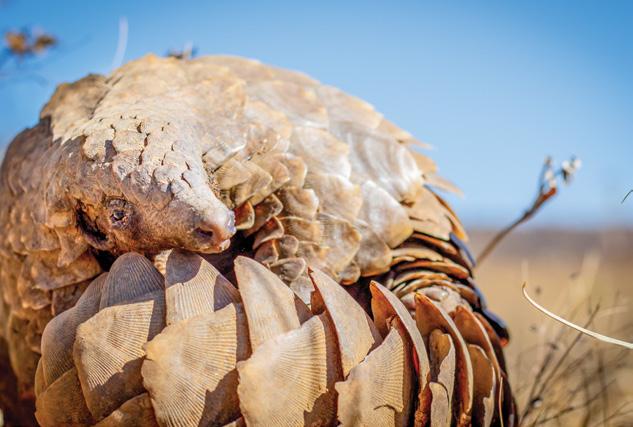
Only limited progress was made in addressing ongoing trade-related threats to elephants, including demand for live elephants for display. Efforts to clarify a prohibition on the export of wild-caught African elephants to “ex situ” facilities (i.e., facilities outside the natural and native range) approved at CoP18 were blocked by parties that, despite considerable evidence to the contrary, continue to believe that there remains a conservation value to keeping elephants in captivity.
As a temporary reprieve, the parties agreed to a moratorium on exports to ex situ destinations (except under exceptional circumstances) pending the outcome of a meeting of African elephant range states and experts to discuss the matter.
For working documents that directly or indirectly touch on animal welfare issues, the results were mixed, with minimal progress made on addressing concerns associated with the fate of confiscated animals. There was limited progress on clarifying the registration process for facilities breeding Appendix I species for commercial trade, and deliberations on this will continue during the intersessional period before CoP20 in 2025. For live animals in transport, the parties agreed to request that the International Air Transport Association provide its live animal transport guidelines at no charge to the parties and encourage parties to apply those standards to domestic transport of specimens in trade.
The parties established an intersessional working group to consider the role of CITES in reducing the risk that international wildlife trade will trigger future pandemics or other public health emergencies and directed the secretariat to review actions on this issue by other international bodies. AWI will seek to serve on this working group, as well as another to develop strategies for determining which species are most at risk of extinction due (at least in part) to international wildlife trade—in hopes that an early warning process can be developed to enable earlier intervention.
Finally, progress was made on the production of annual illegal trade reports; bolstering wildlife crime law enforcement in West and Central Africa; fighting online wildlife crime; reducing demand for imperiled wildlife; addressing the role of domestic wildlife markets in contributing to illegal international trade; specimen identification tools; how exporting/importing countries make “non-detriment findings”
CITES C o P19
14 AWI QUARTERLY WINTER 2022
GROUND PANGOLIN, SIMON EEMAN
(to determine whether a species is being harmed by the trade); regulating trade in specimens produced via biotechnology; addressing illegal trade in cheetahs; and conservation and trade regulation of West African vultures, amphibians, marine turtles, sharks and rays, seahorses, saiga antelopes, freshwater turtles and tortoises, marine ornamental fish, and several big cat species, including jaguars, tigers, and African lions.
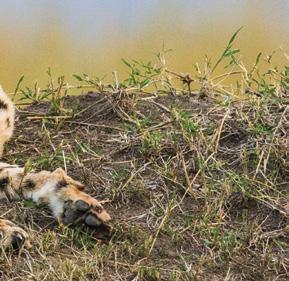

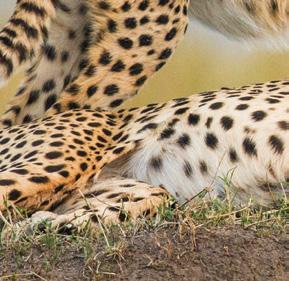



SIDE EVENTS



AWI was pleased to host two side events designed to educate delegates on matters relevant to CITES. The first, “Combating the Global Snaring Crisis: Insights and Innovations from Around the World,” featured presentations by experts from South Africa’s KaiNav Conservation Foundation, Wildlife Trust of India, and WWF-Singapore, who discussed their work with local communities and government officials to remove illegal snares and traps, rescue trapped animals, prosecute offenders, and educate communities about the harm these devices cause. They noted that illegal hunting and trapping pose a major threat to global wildlife populations and that among the most common hunting tools in these regions are homemade snares made from widely available materials such as rope, nylon, or thin wire cables. Such snares are inexpensive to make, easy to set and conceal, and devastatingly effective in catching wildlife, causing horrific injuries and, when not checked regularly, resulting in painful and prolonged deaths. In Southeast Asia alone, more than 700 mammal species, including many listed under CITES, are regularly caught in snares, resulting in both a conservation and welfare crisis. The event offered an excellent opportunity for delegates to learn how to implement snare-reduction initiatives. Several countries have contacted Wildlife Trust of India since the event seeking to use their mobile app to collect data on snares.
AWI also hosted “There is Still Hope: CITES’ Role in Stopping Illegal Fishing and Saving the Vaquita” in collaboration with the Center for Biological Diversity, the Environmental Investigation Agency, and Natural Resources Defense Council.
This event, which featured one of the world’s leading scientific authorities on the vaquita, emphasized the need for increased enforcement in the Upper Gulf of California to stop illegal fishing with gillnets. In addition to documenting the ongoing failures of Mexico to enforce its own fishing laws and rules, participants learned about important initiatives underway in Upper Gulf communities to reduce illegal fishing by promoting fishing methods that don’t harm the vaquita.
CONCLUSION

Overall, CoP19 resulted in significant conservation benefits to a host of species. In some cases, the benefits of listing will be delayed, as the proponents agreed to 12- or even 18-month delays concerning when protections will come into effect. Unfortunately, this provides time for unscrupulous industries, hunters, collectors, and traders to double down on their efforts to capture and kill these species.

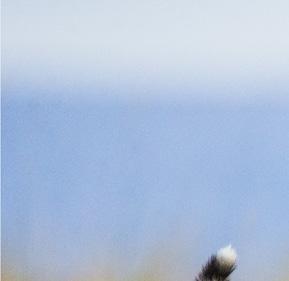
While achieving a CITES Appendix I or Appendix II listing is a considerable accomplishment, such listings are only effective if all parties properly abide by the convention. Once all the new listings are in effect, it will be up to the secretariat, parties, and observers to ensure that they are implemented and enforced and that parties who violate the convention are held accountable. In other words, the work in realizing the conservation gains achieved at CoP19 has just begun.
For the critical technical issues that influence the operational success of CITES, the parties and observers—including AWI— will continue to advance reforms intersessionally, including at upcoming meetings of the Standing, Animals, and Plants committees. Only through such painstaking—and often infuriatingly slow—work will the true strength of CITES in regulating international wildlife trade and combatting illegal trade be realized.
CITES C o P19
CHEETAHS,
ANDREY 15 AWI QUARTERLY WINTER 2022
GUDKOV
AWI Honors Wildlife Law Enforcement Champions in Panama
Since 1994, at each meeting of the CITES Conference of the Parties, AWI has honored individuals, organizations, and agencies that have demonstrated excellence in combatting wildlife crime with the Clark R. Bavin Wildlife Law Enforcement Award. The award, presented at a reception hosted by the Species Survival Network, is named in honor of the late chief of the US Fish and Wildlife Service’s Office of Law Enforcement, who pioneered the use of covert investigations, sting operations, and forensic science to identify and prosecute wildlife criminals.
In 2022, AWI, with the assistance of CITES Secretary-General Ivonne Higuero, recognized the exceptional dedication of the nine newest Bavin Award recipients. This year’s honorees include rangers, police officers, attorneys, administrators, and special agents who, through complex investigations, tireless field work, and capacity building, have advanced the global effort to combat wildlife crime—a significant factor in the global biodiversity crisis. The following are the 2022 Clark R. Bavin Wildlife Law Enforcement Award recipients:
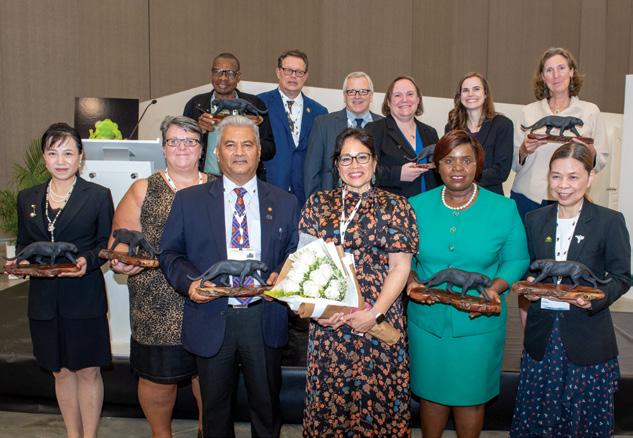
Ahmed Ali Mohamed, Kenya Wildlife Service law enforcement officer, for planning and executing several covert operations to apprehend poachers and other wildlife criminals in possession of items from protected wildlife species, including elephant ivory, rhino horn, and pangolin scales.
General Administration of Customs of China Anti-Smuggling Bureau for arresting numerous wildlife criminals trafficking massive quantities of elephant ivory, rhinoceros horn, and other wildlife products; participating in several global wildlife anti-trafficking operations; and conducting educational campaigns to protect wildlife and combat wildlife crime.
Jonnes Alfred Kadamika, retired head of a Malawi Police covert investigations unit that dismantled one of southern Africa’s most prolific wildlife crime syndicates, responsible for trafficking in elephant ivory, rhino horn, pangolin scales, hippo teeth, and other illegal goods.
Lance Cruse, UK Border Force intelligence officer, for preparing several guidelines, handbooks, and species checklists to aid wildlife crime enforcement efforts and for training thousands of customs and police officers, veterinarians, and others to strengthen their capacity to stop wildlife crime.
Paul Montuori, US Fish and Wildlife Service special agent, for the arrest and prosecution of individuals and organizations engaged in trafficking of kingsnakes, tarantulas, dried seahorses, pipefish, shark fins, scorpions, and other wildlife parts and products, including from species protected under CITES and the US Endangered Species Act.
Ryan Bessey, US Fish and Wildlife Service special agent, and Ryan Connors, Department of Justice trial attorney, for leading Operation Common Denominator, which resulted in the arrest and prosecution of American and Chinese nationals involved in the cruel smuggling of thousands of CITES-listed turtle species.
Thanatchon Kengkasikij, Royal Thai police colonel, for combatting forest and wildlife crime—including the illegal trade in big cats, shahtoosh wool (obtained by killing Tibetan antelopes), and elephant ivory—in Thailand and beyond, resulting in the arrest of hundreds of wildlife criminals.
Tilotama Varma, India Wildlife Crime Control Bureau additional director, for training over 66,000 officers to combat wildlife crime and for coordinating hundreds of multiagency operations targeting the trafficking of turtles, big cats, birds, pangolins, and other species, leading to the arrest of nearly 1,600 wildlife criminals since 2015.
wildlife
WILDLIFE
16 AWI QUARTERLY WINTER 2022
FRANK KOHN/USFWS
STUDY REVEALS GRIZZLY BEAR TOES AMPUTATED BY TRAPS
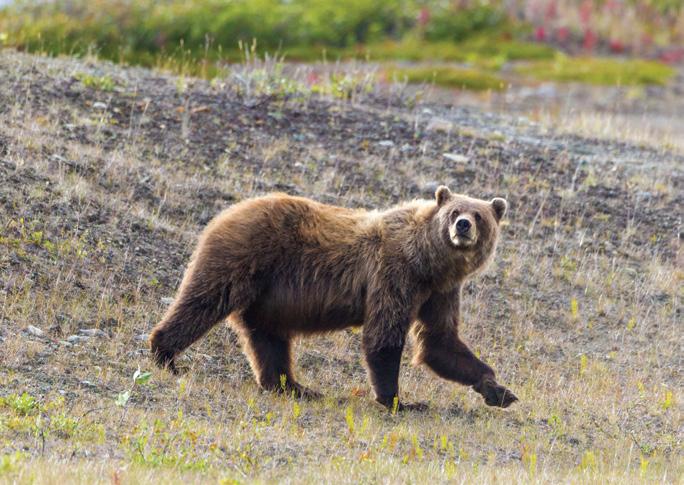
In a study published in August in the journal Wildlife Society, Dr. Clayton Lamb of the University of British Columbia and colleagues reported that 4 of 59 grizzly bears captured and collared in southeast British Columbia between 2016 and 2020 had toes missing from one of their front paws. Lamb et al. concluded that the toes had most likely been amputated by body-gripping traps—large, rectangular devices set by fur trappers designed to slam shut on the necks or torsos of small mammals. By testing the traps on the paws of bear carcasses, the scientists determined that they do not immediately fracture bones or sever the bears’ toes. Instead, they clamp down with enough force to prevent blood flow, resulting in necrosis and gradual sloughing off of the digits over weeks or months. To illustrate this excruciating process, the study included several photos of live grizzlies in southern British Columbia seen with bodygripping traps attached to partially severed toes or paws.
The authors noted that nontarget captures are nothing new—many species are unintentionally caught in traps, including mountain lions, birds, dogs, and cats. Within southern British Columbia in recent years, a number of grizzly bears have been caught in steel-jaw leghold traps set for wolves. Amputated toes on grizzlies, however, have not been previously reported. The researchers hypothesized that these novel injuries could be the result
of some trappers using increasingly powerful traps perceived by some to be more humane (i.e., quick killing) for target animals. The study findings, however, provide a gruesome example of the prolonged suffering that such traps can still inflict.
BOZEMAN LAUNCHES BEAR CONFLICTREDUCTION PILOT PROGRAM
Over the past year, AWI partnered with the Sierra Club and the Greater Yellowstone Coalition to encourage the City of Bozeman, Montana, to take steps to address increasing incidents of human-bear conflicts. A wide variety of attractants can lure bears into residential areas, including barbeque grills, bird feeders, fruit trees, and dog food left outside. Most enticing of all, however, is garbage. When standard trash bins are left out on the curb— especially at night—they become easy targets for investigating bears. But human trash is dangerous. Bears can cut their gums and paws on glass
and metal, ingest harmful plastics, or get their heads stuck in containers. Even worse, after spending time near human communities, bears can lose their natural fear of people. Habituated bears may be killed by wildlife managers as a last resort—last year, nine bears were killed in Bozeman due to habituation and food conditioning.
In response, AWI and our partners urged the city to implement a pilot project to provide residents in highconflict neighborhoods with bearresistant garbage bins. City officials agreed and purchased 50 bear bins for residents this fall. The city also launched a “bear aware” educational campaign, posting information on its website and distributing flyers and door hangers with tips about living in bear country. The Bozeman Daily Chronicle editorial board offered an enthusiastic endorsement, writing, “Amen. May this project be met with resounding success and be expanded citywide soon.” We have already begun conversations with the city about investing in another 50–100 bins for next year.
WILDLIFE DANITA DELIMONT
17 AWI QUARTERLY WINTER 2022
A study published this year underscored the danger to nontarget wildlife from indiscriminate bodygripping traps. It found that a number of grizzly bears in British Columbia have lost toes, evidently the result of excruciating encounters with traps.
Mitigating Human-Wildlife Conflicts on Vail Pass in Colorado
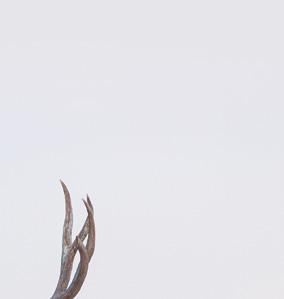
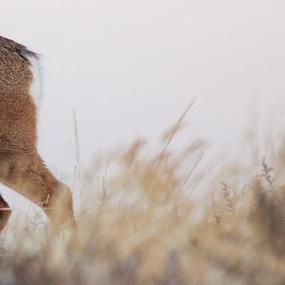
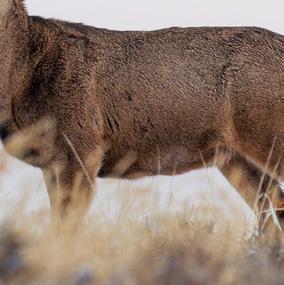
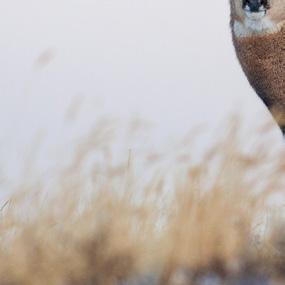 by Paige Singer, Rocky Mountain Wild
by Paige Singer, Rocky Mountain Wild

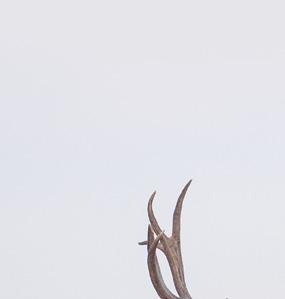
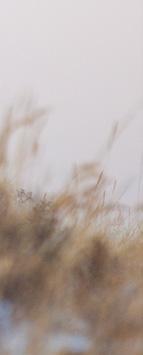
East Vail Pass on Interstate 70, between Copper Mountain Resort and the top of Vail Pass, is an important movement corridor for wildlife in Colorado. Most recently, the Summit County Safe Passages Connectivity Plan for Wildlife, initiated by the US Forest Service, identified East Vail Pass as a top priority area in which to focus human-wildlife conflict mitigation efforts in the near term. The plan, completed in 2017, was developed by a diverse group of stakeholders and provides a common vision for multispecies landscape connectivity throughout Summit County, Colorado.
Encompassed entirely by the White River National Forest, East Vail Pass is important habitat for several wildlife species. Yet wildlife movement in the area is at risk due to the heavy and increasing traffic volumes on I-70—this stretch sees 23,000 vehicles on an average day. This amount of traffic presents a significant barrier to wildlife, with many animals not attempting to cross the roadway, or dying in the attempt. To restore connectivity, three wildlife-crossing structures— one overpass and two underpasses—have been recommended to allow for the safe passage of wildlife over or under I-70.
Monitoring, both before and after construction, is essential to assess whether mitigation measures for wildlife connectivity are successful. Since 2015, Rocky Mountain Wild and partners have engaged the local community in wildlife monitoring at the proposed overpass location. In spring 2021, following a
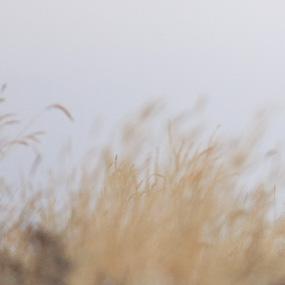
brief hiatus due to the COVID-19 pandemic, we expanded the monitoring program to include all three proposed structure locations thanks to generous funding from an AWI Christine Stevens Wildlife Award.
This four-year study uses a comprehensive monitoring scheme of remote-triggered cameras to collect data on relative abundance of target wildlife species in the vicinity of I-70 on East Vail Pass. Since implementing the expanded monitoring program, we have placed the project’s 30 cameras at 240 locations throughout the roughly 700-acre study area, moving each camera to a new location once every five weeks during the summer field season.
We collected over 160,000 images in our first two years, documenting the presence of several species, including American marten, black bear, bobcat, coyote, elk, moose, mule deer, porcupine, snowshoe hare, red fox, and raccoon. Perhaps most exciting is that our team has documented bighorn sheep on East Vail Pass for the first time since monitoring began in 2015.
The collected data has already informed structure designs to ensure they are built to meet the movement needs of all wildlife in the area. Furthermore, the data will permit us to assess the effectiveness of the structures by comparing it with wildlife monitoring data collected once the structures have been built.
Additional information about this project is available online (search: “I-70 East Vail Pass Wildlife Crossings StoryMap”).


MATT KAMINSKI 18 AWI QUARTERLY WINTER 2022
THE BLEEDING OF HORSESHOE CRABS IS DRAINING THE SPECIES
A lawsuit filed earlier this year against pharmaceutical giant Charles River Laboratories alleges that the company is contributing to a significant decline in horseshoe crabs (listed as “vulnerable” on the IUCN Red List) and red knot shorebirds (listed as “near threatened”) in South Carolina. Charles River and three other US companies harvest crabs for their blood, which they use to produce a test that detects the presence of harmful bacteria in substances that are to be injected or placed inside a human or animal body (see AWI Quarterly, winter 2021).
The lawsuit, filed by the Southern Environmental Law Center, claims that the multibillion-dollar company keeps the crabs in overcrowded, unsanitary artificial containment ponds for many weeks without food before bleeding them, causing thousands to die. According to the complaint, when the company stopped keeping crabs in the ponds for one year in 2016, crab densities increased by 50 percent (after a steep five-year decline). Moreover, because the crabs are captured as they emerge from the ocean to spawn, containing them in ponds means they spawn in captivity rather than on the beach. This deprives red knots the opportunity to feed on the nutrient-rich eggs, which are critical to the birds’ survival on their 9,000-mile migratory journey.
Despite the legal troubles, Charles River shows no signs of slowing down: The company has recently been issued a new state permit allowing them to bleed crabs on Cape Cod. “Massachusetts
horseshoe crab populations might not be able to withstand the expected increase in harvest,” said Mark Faherty, science coordinator at Mass Audubon, which surveys the Cape Cod horseshoe crab population. Decades ago, regulators at the Atlantic States Marine Fisheries Commission, which oversees the horseshoe crab industry, said they may consider taking action if the bleeding mortality rate in the United States exceeded 57,000 deaths per year—a threshold that has been surpassed almost every year since 2007. Defenders of Wildlife policy analyst Christian Hunt said that without better oversight of horseshoe crab bleedings and outcomes, “It’s the Wild West for the biomedical industry.”
The continued collection of horseshoe crabs is all the more troubling because an effective non-animal alternative test has been available since 2004 and approved for standard use in Europe since January 2021. In the United States, its approval has stalled in the face of vocal opposition from Charles River—which profits handsomely from its production of the
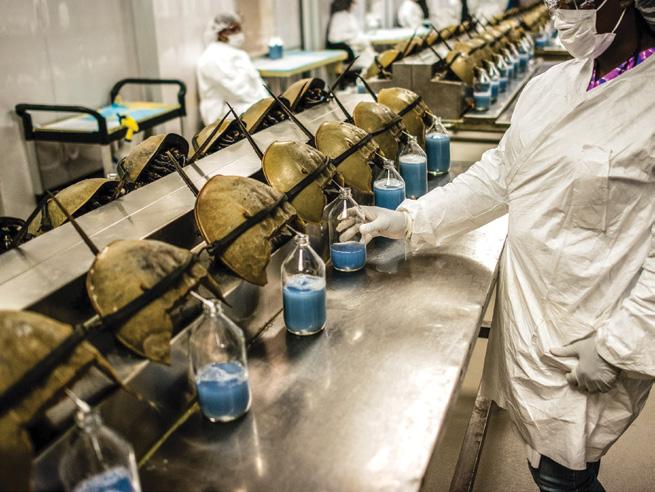
crab blood–based test. The company claims the alternative test is not safe, and that they are in the process of developing their own synthetic version—but that it will take years before it will be ready.
AWI LAUNCHES NEW GRANT TO BENEFIT ANIMALS IN LABS
This spring, AWI is launching a new grant program: the Implementing Refinement Grant. This new program will offer grants of up to US$8,000 to fund the purchase of environmental enrichment or other equipment to improve the welfare of animals in laboratories. For more information, please visit awionline. org/implementingrefinement or scan the QR code.

animals in laboratories ANIMALS IN LABORATORIES
TIMOTHY FADEK
19 AWI QUARTERLY WINTER 2022
Blue horseshoe crab blood is drained for medical testing, despite the availability of a reliable synthetic alternative.
AWI Urges US Government to Suspend Purchases from Monkey Suppliers After Smuggling Indictment
INa letter delivered November 30, AWI urged the US Department of Health and Human Services (HHS) and the Department of Defense (DoD) to “re-evaluate their reliance on, and support for, providers of animals for research that have demonstrated an inability or unwillingness to ensure that those animals are treated humanely and are not the product of illegal trafficking operations.”
This follows a November 16 announcement by the US Attorney’s Office for the Southern District of Florida (USAO-SDFL) that two Cambodian forestry officials and six representatives of Vanny Resources Holdings, Ltd. and related entities (Vanny) were charged with multiple felonies stemming from an alleged conspiracy to smuggle thousands of wild-caught long-tailed macaques into the United States for research. According to the indictment, the conspirators acquired the monkeys through black market suppliers and falsely reclassified them as captive born—“laundering” them to erase evidence of their illicit origins.
One Cambodian official was arrested that same day at New York’s JFK Airport. Incredibly, he was en route to Panama to participate in the 19th meeting of the Conference of the Parties (CoP19) to the Convention on International Trade in Endangered Species of Wild Fauna and Flora (CITES), the latest in a series of triennial gatherings of nations aimed at strengthening CITES’ international trade protections for vulnerable wildlife (see page 11 for a report on CoP19). Longtailed macaques are among the species
protected under CITES. Earlier this year, the International Union for Conservation of Nature changed its classification of long-tailed macaques from “vulnerable” to “endangered,’’ noting that “the demand for non-human primates in research is threatening the species.”
The indictment also describes, without naming, two unindicted co-conspirators (UCCs)—US entities alleged to have received over 2,000 monkeys at sites in the Southern District of Florida and Alice, Texas. A review of primate dealer inspection reports suggests that Worldwide Primates may be the only primate dealer in the Southern District of Florida with sufficient size to take in the number of monkeys alleged to have gone to that location. Worldwide Primates founder Matthew Block, it should be noted, is a convicted felon who served 13 months in federal prison for attempting to smuggle six infant orangutans into Russia in 1990.
Over 1,000 of the monkeys were allegedly delivered to the Alice, Texas, UCC in 2019 and 2020. A review of available records indicates that the only licensed dealers listed by the US Department of Agriculture as operating in Alice Texas, are Envigo Global Services Inc. and Orient BioResource Center—companies acquired by industry giant Inotiv in 2021 and 2022, respectively.
One day after the indictment was announced, in fact, Inotiv disclosed to the Securities and Exchange Commission that Cambodian officials and employees of its “principal supplier” of primates had been
criminally charged with conspiring to illegally import monkeys. One week later, the journal Science named Inotiv as one of two companies that received the monkeys referenced in the indictment.

According to USDA inspection reports, Inotiv is the United States’ largest commercial monkey dealer, with Worldwide Primates ranked third. These two companies currently house over 13,500 monkeys, most of them long-tailed macaques. Inotiv subsidiary Envigo describes itself as the “world’s largest and most trusted source of nonhuman primates.”
The alleged shipments of laundered monkeys to Alice, Texas, occurred before Inotiv acquired Envigo and Orient, but prior issues at the Alice sites should have set off alarm bells for any acquiring company. Indeed, on February 16, 2022, Inotiv disclosed
20 AWI QUARTERLY WINTER 2022
LONG-TAILED MACAQUE, MEGAN COUGHLIN
to the SEC a June 2021 grand jury subpoena to Envigo from the USAOSDFL related to primate imports from Cambodia, China, and/or Vietnam. Inotiv subsequently reported primaterelated subpoenas to Orient and Envigo. Moreover, at least three members of what Inotiv calls its “Accomplished Senior Leadership” are Envigo holdovers.
Worse still, Gary Tucker was an Orient vice president in August 2021 when he pleaded guilty to willfully lying to investigators during a prior wildlife trafficking investigation regarding the laundering of monkeys from Cambodia. Tucker remained Orient’s vice president until January 2022, when Inotiv acquired the company. According to his LinkedIn profile, he was previously site director at another of the Alice, Texas, sites, when it was owned by Envigo predecessor Covance. During this timeframe, abuses of imported longtailed macaques resulted in a $31,500 fine levied against Covance.
Of course, all this comes less than six months after nearly 4,000 beagles were rescued from abusive conditions at Envigo’s now-shuttered Cumberland, Virginia, breeding facility after months of horrific USDA inspection reports prompted emergency intervention by the Department of Justice (see AWI Quarterly, fall 2022). Federal records indicate that HHS has purchased dogs from Envigo, and that HHS and the DoD have purchased significant numbers of primates from Envigo and Worldwide Primates. Records show that, since 2019, the departments have spent tens of millions of dollars on long-tailed macaques.
Cambodia’s Ministry of Agriculture, Forestry and Fisheries said it was “surprised and saddened” to learn of the arrest of one its officials—but not because of any chagrin over his alleged criminal activity. Rather, it asserted that
Largest US Commercial Primate Dealers
long-tailed macaques “are not caught from the wilderness and smuggled out, but farmed in decent manners [sic].” In the Science exposé , AWI researcher Eric Kleiman responded by stating, “‘If this is the reaction from the supply side, then we think there needs to be much stricter controls on the demand side.’”
Institutions that fund or conduct research should be held responsible for ensuring that they are purchasing from legitimate sources that prioritize
the care of the animals. At a minimum, HHS and the DoD should halt all dealings with Inotiv (and subsidiaries), Vanny, Worldwide Primates, and all other entities that have relied on their animals, at least while they determine whether these companies can ensure that they provide animals that are well cared for and lawfully sourced. The USDA also has tremendous unused authority to revoke licenses of dealers who fail to comply with animal welfare requirements.
10,000 7,500 5,000 2,500 0
BC US ALPHA GENESIS PRIMATE PRODUCTS WORLDWIDE PRIMATES CHARLES RIVER LABORATORIES INOTIV (ENVIGO & ORIENT)
Note: These numbers represent a snapshot of inventories of long-tailed and rhesus macaques held by commercial dealers, based on the most recent USDA inspections as of November 15, 2022. Primate dealer inventories do not reflect the total number of primates bought and sold by dealers or used in research in a given year. According to USDA data for the 2021 fiscal year, approximately 72,000 primates were used in research, with another 41,000 held in labs but not currently in use in research.
21 AWI QUARTERLY WINTER 2022
LONG-TAILED MACAQUES RHESUS MACAQUES
Exploring Macaques’ Preference for Physical vs. Touch Screen Cognitive Enrichment
by Brittney Armitage-Brown, VT, RLAT, Research Assistant; Darlene Potterton, VT, RLAT, Veterinary Technician; Dr. Brian Coe, Senior Research Scientist; and Dr. Andrew Winterborn, University Veterinarian of Queen’s University
Enrichment that encourages natural exploratory behaviors is important to the welfare of nonhuman primates in research. The purpose of this project, which was funded by an AWI Refinement Grant, was to enhance cognitive enrichment for nonhuman primates and determine whether they prefer physical or touch screen tasks. Two devices were created for their use: a puzzle board (see photo above) and a tablet board. The puzzle board consisted of a plexiglass backing with six doored compartments, each with its own unique lock of varying degrees of difficulty; within each compartment was a reward (jujube or chocolate-covered jujube). The tablet contained pre-installed software with four selectable boxes: sound, light, video, or drawing. Pressing on a box opened another set of three possible boxes (except in the case of drawing), each loading an independent video, sound, or light enrichment. A small amount of peanut butter was placed on the screen to encourage interaction. The animals—six female and four male rhesus macaques—were offered access to each device for 20-minute sessions. Devices were rotated daily for one week. Animals

were observed live or recorded for, among other things, total time engaging and successful use of the item (i.e., how many items were touched, locks unlocked, or boxes pressed). Animals who were pair-housed (two males) or group-housed (all six females) were separated from their partners for individual trials; animals remained in their home pen during trials.
Six of the 10 monkeys interacted with both devices. Two interacted with neither. One interacted with the tablet but not the puzzle, and one interacted with the puzzle but not the tablet. The six individuals who interacted with both devices spent far more time interacting with the puzzle board than with the tablet (mean ± standard deviation: 593 ± 275 seconds for the puzzle board vs. 210 ± 122 seconds for the tablet; p = 0.009). On average, the animals unlocked 3 of 6 compartments on the puzzle board and pressed 4 of 14 possible buttons on the touch screen. Engagement with the tablet device may have been skewed to encourage touch, as it had peanut butter applied to the screen; however, from previously completed trials without peanut butter, this did not significantly increase the amount of engagement time with the device. Once the animals became curious over changes in the screen brought on by their manipulations, engagement time went up.
The animals did not engage with either device to a significant degree initially, although the animals engaged longer and were more successful through the trials with the puzzle board than with the tablet. Cognitive and interactive opportunities (as well as rewards) differ between the devices. Studying what captures their interest allows us to adapt enrichment to better meet their needs. Having staff assist the animals initially with the tablet may result in longer engagement times. Future studies are planned to train animals on use of the tablets, in contrast to this study, which focused on reaction to novel items and preference between devices.
22 AWI QUARTERLY WINTER 2022
DARLENE POTTERTON
AWI AWARDS SCHWEITZER MEDAL TO JENNIFER LONSDALE
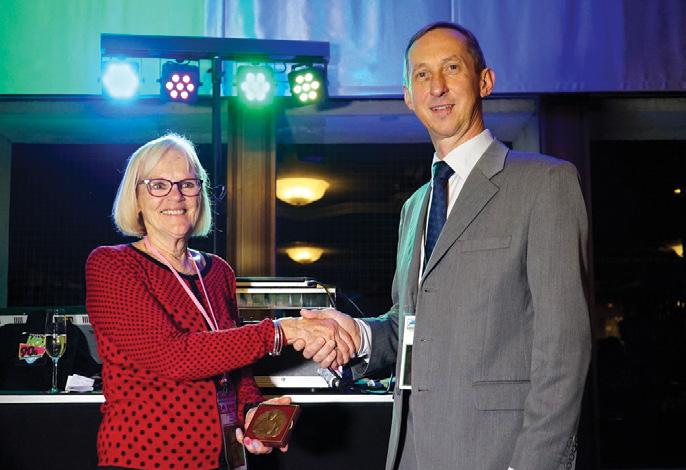
During the 68th meeting of the International Whaling Commission (see story, next page), AWI awarded the Schweitzer Medal to Jennifer Lonsdale in recognition of her outstanding achievements in the advancement of animal welfare. IWC chair Andrej Bibič presented the medal.
Lonsdale has been a fierce ocean advocate for nearly four decades. In the early 1980s, she set sail on an old North Sea fishing trawler with Greenpeace colleagues Allan Thornton and Dave Currey to obtain the first-ever documentation of Norway’s whale hunt, garnering international attention. The following year, Lonsdale documented the Faroe Islands’ pilot whale hunt, collecting images of the gruesome spectacle that shocked the world.
In 1984, with support from AWI founder Christine Stevens, Lonsdale, Thornton, and Currey co-founded the Environmental Investigation Agency (EIA) to investigate and campaign against environmental crime and abuse. As an EIA director and oceans campaigner, Lonsdale worked to address threats to marine life such as climate change, pollution, and entanglement in fishing gear. At the IWC, her advocacy for protection of whales, dolphins, and porpoises helped ensure that cetacean welfare became a core focus of the organization.
In 2016, Lonsdale was appointed an Officer of the Order of the British Empire (OBE) in recognition of her environmental advocacy. This year, she retires from EIA, but leaves behind an
unparalleled legacy. She called receiving the Schweitzer Medal “particularly precious” because “Christine Stevens was a mentor to me for many years.” Certainly, in subsequent years, Lonsdale paid that forward to many, many people, including several at AWI, as evidenced by AWI wildlife biologist DJ Schubert’s description of her at the award ceremony as “a rock, a role model, and mentor… as well as a friend.”
MSC SUSPENDS LOBSTER FISHERY CERTIFICATION OVER RIGHT WHALE THREAT
The Marine Stewardship Council (MSC) has suspended its “blue fish tick” eco-certification of the Gulf of Maine lobster fishery following challenges from AWI and allies. The millions of lines tied to the pots and traps used by lobster and crab fisheries in the region pose a considerable entanglement risk to the critically endangered North Atlantic right whale.
In July, a federal court ruled that the National Marine Fisheries Service— in failing to satisfy risk-reduction
mandates of both the Endangered Species Act and the Marine Mammal Protection Act—is delinquent in its duty to protect right whales. With this ruling in hand, AWI, the Natural Resources Defense Council, and Defenders of Wildlife submitted joint comments contesting MSC’s certification of the Gulf of Maine lobster fishery. In November, the MSC assessment body found that the decision did indeed indicate the fishery was out of compliance with US law and thus does not meet MSC requirements.
MSC is not the first evaluator to acknowledge the threat: In September, the Monterey Bay Aquarium Seafood Watch Program placed lobster from the Gulf of Maine in its red “Avoid” category “due to risks to the critically endangered North Atlantic right whale and insufficient measures for reducing these risks.”
A number of retailers have responded to these warnings, indicating that they would cease purchasing Gulf of Maine lobster, including HelloFresh, Blue Apron, Whole Foods Market, and the UK’s Marks & Spencer.
marine life MARINE LIFE
KUREMO
23 AWI QUARTERLY WINTER 2022
Jennifer Lonsdale, long-time ocean advocate and cofounder of the Environmental Investigation Agency, accepts the Schweitzer Medal from IWC chair Andrej Bibič.
IWC68:
Since the International Whaling Commission (IWC) last met in person in 2018, two significant milestones have passed: the 75th anniversary of the IWC’s founding treaty—the International Convention for the Regulation of Whaling (ICRW)—in December 2021 and the 40th anniversary of the decision to prohibit commercial whaling worldwide (known as the moratorium) in July 2022. AWI led efforts among NGOs and governments to commemorate both landmarks—hosting a virtual webinar to observe the ICRW’s 75th anniversary and promote a new vision for the IWC (see iwc50yearvision.org) and organizing an in-person event at the United Kingdom venue of the historic 1982 moratorium vote.

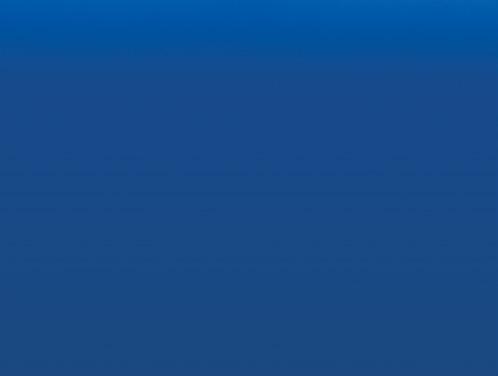


Today, the IWC does far more than regulate whaling, and its growing conservation agenda reflects its deep expertise and global reach in mitigating the climate crisis, biodiversity loss, and other anthropogenic threats to cetaceans and the marine environment. But an observer of the 68th IWC meeting, held in Slovenia in October, would have experienced profound cognitive dissonance: During the first days of technical committees and working groups, governments and NGOs
advanced the conservation and welfare agenda in productive closed sessions. Days later, the main plenary session degenerated into disarray and recrimination as a small faction of pro-whaling countries disrupted proceedings, prevented decision-making, and blocked progress.
The three remaining commercial whaling nations—Norway, Iceland, and former IWC member Japan—and supporters from small developing countries no longer hold enough votes to overturn the moratorium, but they are adept at exploiting the rules of procedure to cause maximum chaos, and they pose an existential threat to the IWC itself.
Like other international organizations, the IWC is struggling in the current economic climate, with a significant number of member nations behind on their annual contributions. Under the rules of procedure, countries in arrears cannot vote, but IWC68 began with a gesture of support toward those whose financial challenges arose specifically from the COVID-19 pandemic: Voting rights were restored (for this meeting only) to 18 countries that had arrears for 2020, 2021, and/or 2022.
Budget Woes and Bad Faith Gestures Nearly Derail Whale Protection BRYDE’S WHALE, YAMMO 24 AWI QUARTERLY WINTER 2022
This amnesty—originally proposed by the pro-whaling nations—had the unexpected effect of putting within reach a proposal that has eluded pro-conservation countries for more than two decades. A block of Latin American countries known as the Buenos Aires Group has repeatedly proposed a whale sanctuary in the former industrial whaling grounds of the South Atlantic but has never managed to secure the three-quarters majority vote needed for it to pass. With a number of lapsed conservation votes temporarily restored at IWC68, and several pro-whaling countries not in attendance, this target was achievable for the first time in years and the excitement was palpable.
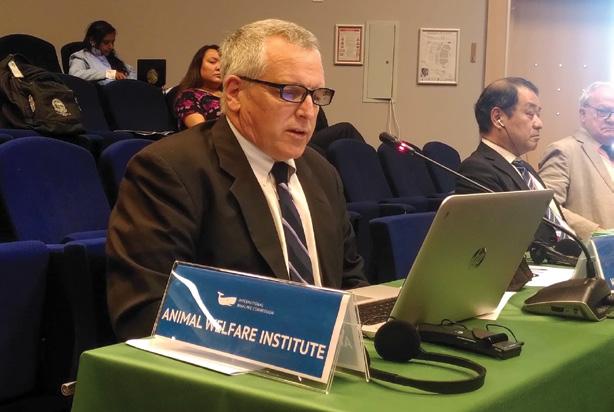
Sadly, however, pro-whaling nations conspired to scuttle the attempt. Antigua & Barbuda, Benin, Cambodia, Cameroon, Cote d’Ivoire, Guinea, Ghana, Iceland, Kiribati, Laos, Liberia, Mauritania, Morocco, Nauru, Palau, St. Lucia, and Solomon Islands resorted to boycotting the session in which the proposal was discussed. Their absence broke the quorum required for decision-making (attendance by a majority of the 88 IWC members) and prevented the proposal from being approved. Angry recriminations about their undiplomatic behavior endured for the remaining day of the meeting and set the tone for some very difficult discussions on other agenda items.
Two proposals that needed only a simple majority to pass were submitted by pro-whaling countries. Antigua & Barbuda proposed to overturn the whaling moratorium and restart a process, abandoned 15 years ago, to replace the ban with a new whaling management regime. It also—along with Gambia, Guinea, and Cambodia—offered a resolution promoting whaling as a solution to global food insecurity. Neither resolution could secure the votes needed to pass, but their voluble proponent ensured that they occupied hours of meeting time. Ultimately, it was agreed that the proposals would be discussed intersessionally and reintroduced at the next IWC meeting in 2024.
It is rare for budget discussions at international meetings to be dramatic cliffhangers, but the IWC is in a dire financial situation and desperately needed to adopt a budget to ensure it would survive until its next meeting, especially as income from membership fees was not keeping pace with rising inflation. We feared another pro-whaling nation walkout on the last day would prevent the IWC from adopting a budget, but a compromise was eventually reached. Fees were increased only for the richest members and cuts were made to secretariat services and meeting expenses.
Ultimately, while IWC68 was a disappointment, it was not a disaster: The moratorium remains intact, the IWC has enough funds for its critical intersessional work, and it agreed to
several useful operational changes and financial reforms. The IWC adopted, by consensus, a resolution on marine plastics that will facilitate more collaborative work on this critical global threat to cetaceans, created a climate change work stream in the Conservation Committee where mitigation initiatives will be developed, and endorsed the use of a Whale Welfare Assessment Tool to better understand—and avoid— the impacts of a range of human activities on cetaceans. The IWC also endorsed a joint initiative of the Conservation and Scientific committees to address the growing problem of cetacean species facing extinction and expressed concern for critically endangered species such as the vaquita, Maui dolphin, and North Atlantic right whale.
AWI’s team at the IWC was active across all these issues on the agenda, often providing research and technical advice to governments making difficult decisions. We were also pleased to contribute more than $30,000 in voluntary funding to support the IWC’s conservation and welfare work, especially for small cetaceans and bycatch mitigation.
The IWC’s two recent anniversaries have prompted reflection on the global significance of the IWC and its vital moratorium on commercial whaling, and they offer an important lesson in taking a long view when addressing global conservation issues while reacting urgently to immediate threats. As we look ahead to IWC69—to be held in Lima, Peru—we will work with likeminded NGOs and governments on a plan to prevent a repeat of the chaos of IWC68, protect the moratorium, and, hopefully, finally secure a South Atlantic whale sanctuary.
25 AWI QUARTERLY WINTER 2022
Wildlife biologist DJ Schubert was one of four AWI representatives working to increase cetacean protections at IWC68 in Slovenia.
IN A LAND OF AWE
Chad Hanson / Broadleaf Books / 219 pages

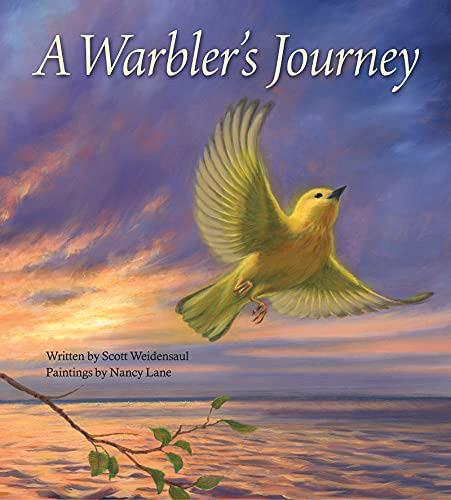


Dr. Chad Hanson’s In a Land of Awe: Finding Reverence in the Search for Wild Horses offers a sweeping vista of the wild horses that the author has come to know and cherish, particularly through his journeys observing herds near his home in Wyoming and in the Dakotas.

Equal parts travelogue, history/analysis of wild horses in this country, spiritual guide, and introspective diary, this book was penned by Hanson—who teaches sociology at Casper College—because he “want[s] us to find ourselves locked in contemplative encounters, in the presence of some of the last examples of full-sized, free-roaming megafauna left” on the continent.
In a Land of Awe is especially timely given that, in late 2021, the Bureau of Land Management undertook the largest roundup of wild horses in US history (removing them from the Wyoming checkerboard region) and, more recently, has moved to eliminate millions of acres of designated wild horse habitat in the Cowboy State in deference to private
interests that wish to graze domestic livestock on those lands. Hanson alludes to Wyoming’s status as pivotal battleground over the future of wild horses, and he doesn’t shy away from the grim realities of wild horse management (e.g., describing the brutality of helicopter roundups).
While the book is concerned first and foremost with the unique majesty of mustangs, it is also an exhortation to the reader to escape the glare of the ubiquitous screens on our technological devices and spend time in nature. In many ways, Hanson seeks to channel Henry David Thoreau, and excerpts from the transcendentalist philosopher abound.
On the whole, In a Land of Awe offers an enjoyable and brisk read that covers considerable terrain—from the evolutionary origins of modern-day horses, to zoological accounts of the complex family band dynamics that drive wild horse behaviors, to the present challenges surrounding their management in the United States. The book serves as an urgent appeal to understand the inherent worth and dignity of wild horses and works to dispel the false narrative—often pushed by the livestock industry—that mustangs are merely feral animals who have no place on the landscape.

REVIEWS
26 AWI QUARTERLY WINTER 2022
AN IMMENSE WORLD
Ed Yong / Random House / 464 pages
An elephant, a mouse, a robin, an owl, a bat, a rattlesnake, a spider, a mosquito, a bumblebee, and a human enter a school gym. An Immense World: How Animal Senses Reveal the Hidden Realms Around Us opens not with a joke, but with a thought experiment: How would each of these creatures perceive the colors, textures, smells, sounds, vibrations, electric and magnetic fields, and open space around them— and each other? How would this change, if at all, if the lights were turned off?
So begins a remarkable exploration of what Pulitzer Prize–winning science journalist Ed Yong terms animals’ “sensory bubbles,” or “Umwelten.” “Umwelt” (singular) means “environment” in German—but Yong uses it more specifically to mean the parts of an animal’s surroundings that the animal can actually sense and experience. He reveals that the human Umwelt, though our reality, is but a sliver of all reality. We perceive only a fraction of the colors that hummingbirds do. We cannot hear the ultrasonic squeaks of rodents or the infrasonic calls of elephants or whales, smell the cornucopia of scents our dogs pick up during neighborhood walks, or register the magnetic fields that sea turtles, lobsters, and migratory birds have used for millions of years to navigate.
But, writes Yong, the purpose of the book, and of examining other animals’ senses, is not to compare animals with ourselves. Rather, it is to better understand “animals as animals.” To that end, Yong introduces us to snakes that smell with their tongues, catfish that taste with their skin, moles that feel with fingered noses, bats that echolocate, fish that electrolocate, octopuses whose arms act as individual brains, and spiders whose webs act as extensions of their minds. And with each astonishing encounter, we are reminded of just how much more there is to our stimulus-suffused world than meets any of our eyes (or tongues, or tentacles, or trunks).
A WARBLER’S JOURNEY
Scott
Weidensaul
(author) and Nancy Lane (illustrator) / The Gryphon Press / 32 pages
A Warbler’s Journey, written by Pennsylvania naturalist Scott Weidensaul and illustrated by Nancy Lane, is a beautiful and informative book. Through the travels of the yellow warbler, readers learn about the migratory path and the ecological role of this little bird. From the tropical rainforest, over the Gulf of Mexico, and up to Northwest Canada, the yellow warbler is depicted in colorful paintings that capture the natural beauty of each region. Younger readers especially will enjoy spotting the petite yellow bird, and other animals, in many of these lovely illustrations.
The written descriptions of the warbler’s trek are just as vivid as the artwork. Sights, sounds, and even flavors—offered from the vantage point of the warbler as well as the human characters— add richness and depth to the tale. The bird’s story is eventful without being overly fraught, making it an inspiring and engaging book for both independent reading and story time.
Woven into the warbler’s adventure are the stories of three children who are lucky enough to catch sight of the warbler as she makes her way north. Each of these encounters highlights the connection between humans and nature. This is an important message, and encourages readers of all ages to consider the ways in which they interact with wildlife.
The yellow warbler is not an endangered or threatened species at this time, and they retain a wide-ranging habitat. Perhaps showcasing a more imperiled species in order to raise awareness would have been desirable. This is only a tiny quibble, however, as the book does address the ways in which humans can help protect all migratory birds. The concept of establishing legal protections for wildlife habitat is introduced within the story, and there are two pages at the end devoted to practical actions that people can take in their daily lives.
BEQUESTS
If you would like to help assure AWI’s future through a provision in your will, this general form of bequest is suggested: I give, devise and bequeath to the Animal Welfare Institute, located in Washington, DC, the sum of $ and/or (specifically described property)
Donations to AWI, a not-for-profit corporation exempt under Internal Revenue Code Section 501(c)(3), are tax-deductible. We welcome any inquiries you may have. In cases in which you have specific wishes about the disposition of your bequest, we suggest you discuss such provisions with your attorney.
REVIEWS
27 AWI QUARTERLY WINTER 2022
Since the Animal Welfare Institute Scholarship program was initiated three years ago, we have awarded scholarships of $2,000 each to 36 deserving students. Happily, we have remained in contact with several of the recipients as they continue their education, and they have kindly kept us in the loop regarding their experiences. They have shared their excitement at finding fulfilling extracurricular opportunities to work with animals, spoken of the challenges of learning during COVID, and provided sage advice for others seeking a career working to improve the lives of animals. One student recommends thoroughly exploring all the animal-related career options available. “Although veterinary medicine is an amazing field, there are so many other ways to get involved

with animals.” (Check out this link to get started: awionline. org/animal-welfare-careers.) Another suggests beginning to network while still in high school—even if it seems a little daunting. “Ask for a shadowing opportunity, ask for a tour, ask to have a chat about the person of interest’s career.” We are pleased to continue the scholarship another year and to continue building relationships with dedicated students.
Now through February 18, 2023, high school seniors with a demonstrated commitment to improving the lives of animals, and a desire to do so through college and beyond, can apply for an Animal Welfare Institute Scholarship. This year, scholarship recipients will be awarded $3,000. Scholarship funds may be used for tuition, on-campus room and board, textbooks, student fees, or other education-related expenses for fall 2023. Applicants are asked to share their goals and express their views on important animal welfare issues and must provide two letters of recommendation—one from an academic source and one from someone who can verify the applicant’s activities to date on behalf of animals. To apply, please visit awionline.org/scholarship






AWI acknowledges the value of increased diversity in the animal welfare field. BIPOC students are strongly encouraged to apply.





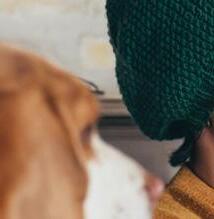







SPREAD THE WORD! SCHOLARSHIPS AVAILABLE FOR STUDENTS SEEKING CAREER HELPING ANIMALS
Non-Profit Org. US Postage PAID Washington, DC Permit No. 2300 CHERRYANDBEES @AWIonline facebook.com/animalwelfareinstitute @AWIonline Return Service Requested






















































































































 by Paige Singer, Rocky Mountain Wild
by Paige Singer, Rocky Mountain Wild









































